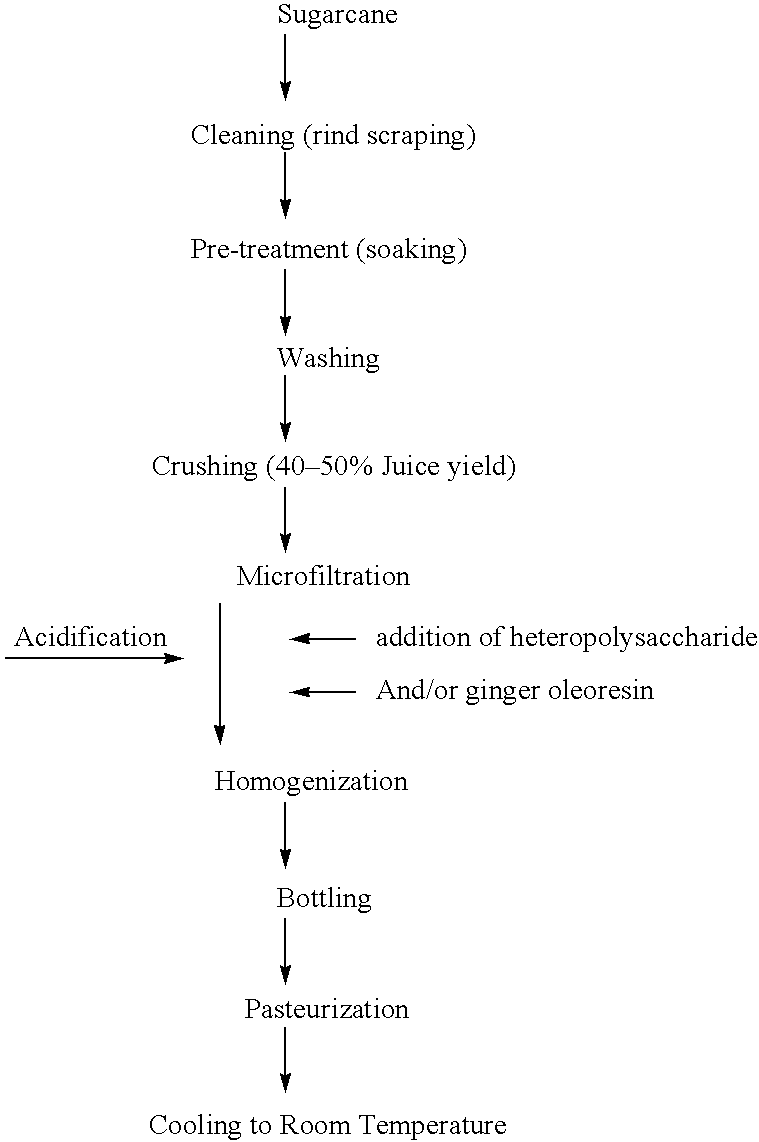Process for preparing ready-to-drink shelf stable sugarcane juice beverage
a technology of sugarcane juice and process, applied in the field of improvement, can solve the problems of contaminating the juice with a heavy load of microorganisms, unable to preserve freshly crushed juice, and unable to meet the needs of consumers
- Summary
- Abstract
- Description
- Claims
- Application Information
AI Technical Summary
Benefits of technology
Problems solved by technology
Method used
Image
Examples
example 2
The clarified sugarcane juice was obtained as per the procedure described in Example--1. The juice was mixed with 0.25% citric acid and a heteropolysaccharide (0.05%) and homogenized. The prepared beverage was filled in sterile glass bottles as mentioned in Example 1 and pasteurized at a temperature of 95.+-.2.degree. C. for 3 min.
example 3
The clarified sugarcane juice was obtained as per the procedure described in Example--1. The juice was mixed with 0.25% citric acid, ginger oleoresin (0.017%) and homogenized with Tween 60. Subsequently, the juice was filled into 200 mL capacity sterile glass bottles with a headspace of 10 mL, crowned and pasteurized at 95.+-.2.degree. C. for 2 min.
PUM
| Property | Measurement | Unit |
|---|---|---|
| pore size | aaaaa | aaaaa |
| operating transmembrane pressure | aaaaa | aaaaa |
| temperature | aaaaa | aaaaa |
Abstract
Description
Claims
Application Information
 Login to View More
Login to View More - R&D
- Intellectual Property
- Life Sciences
- Materials
- Tech Scout
- Unparalleled Data Quality
- Higher Quality Content
- 60% Fewer Hallucinations
Browse by: Latest US Patents, China's latest patents, Technical Efficacy Thesaurus, Application Domain, Technology Topic, Popular Technical Reports.
© 2025 PatSnap. All rights reserved.Legal|Privacy policy|Modern Slavery Act Transparency Statement|Sitemap|About US| Contact US: help@patsnap.com

